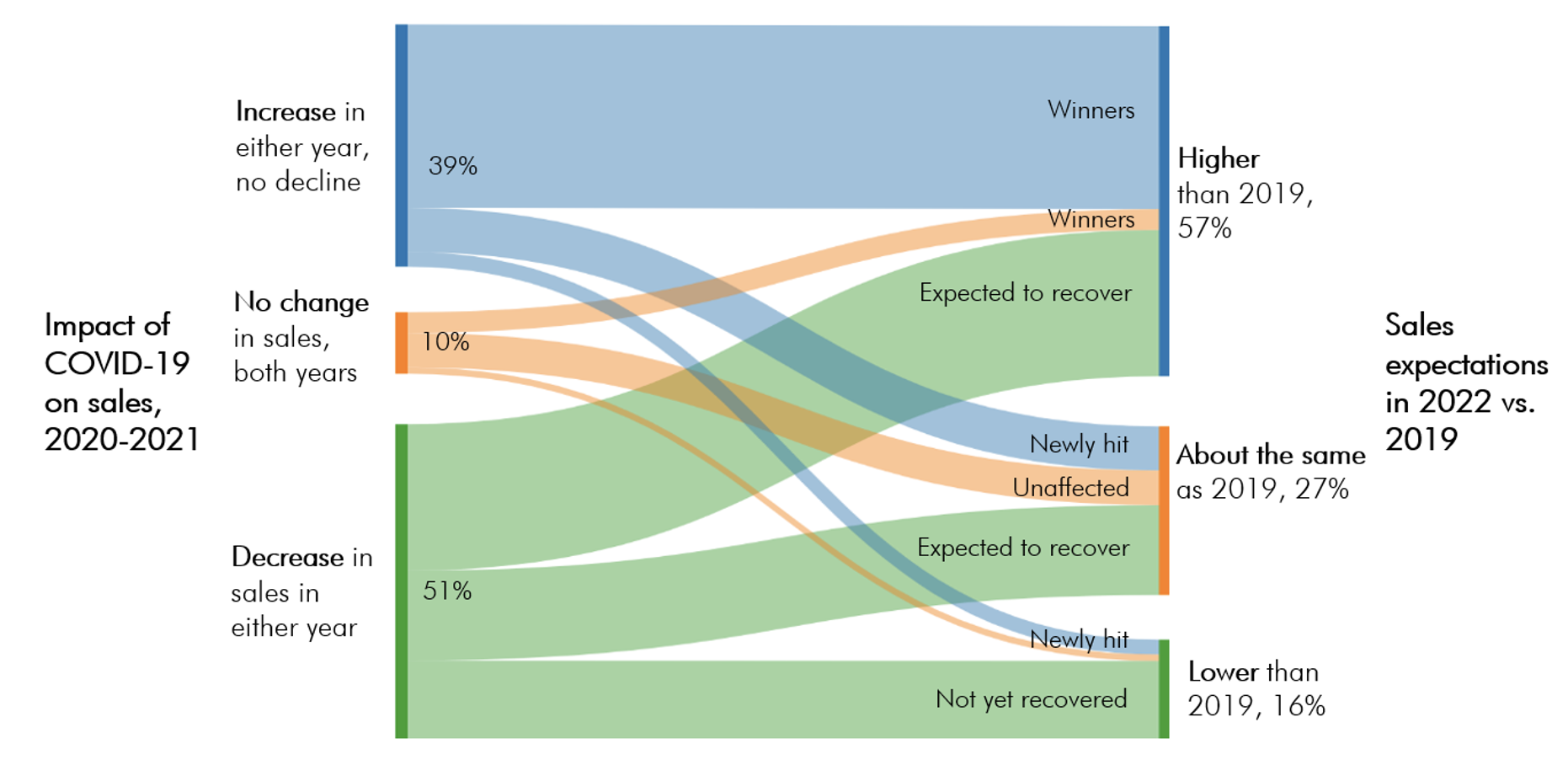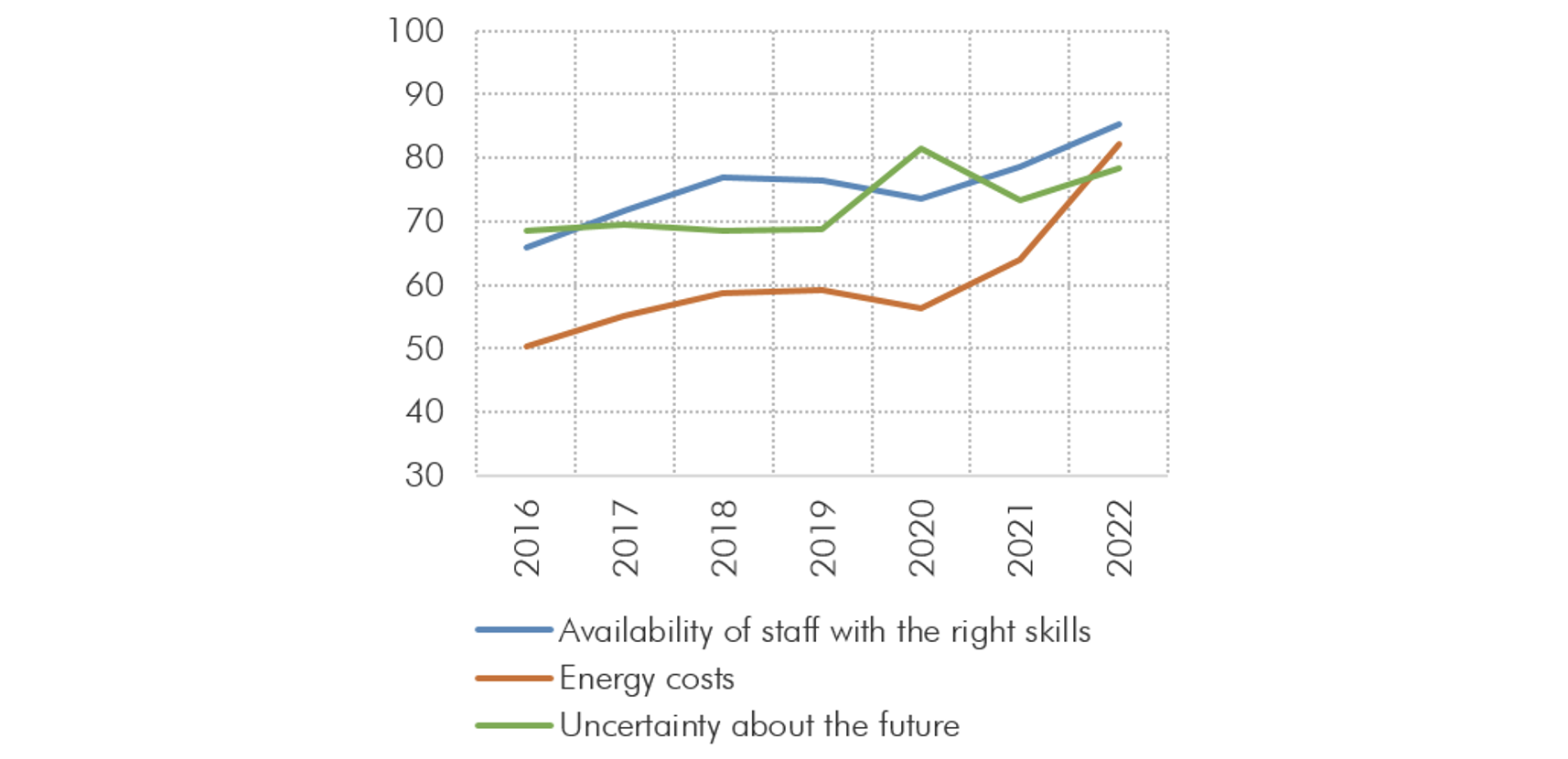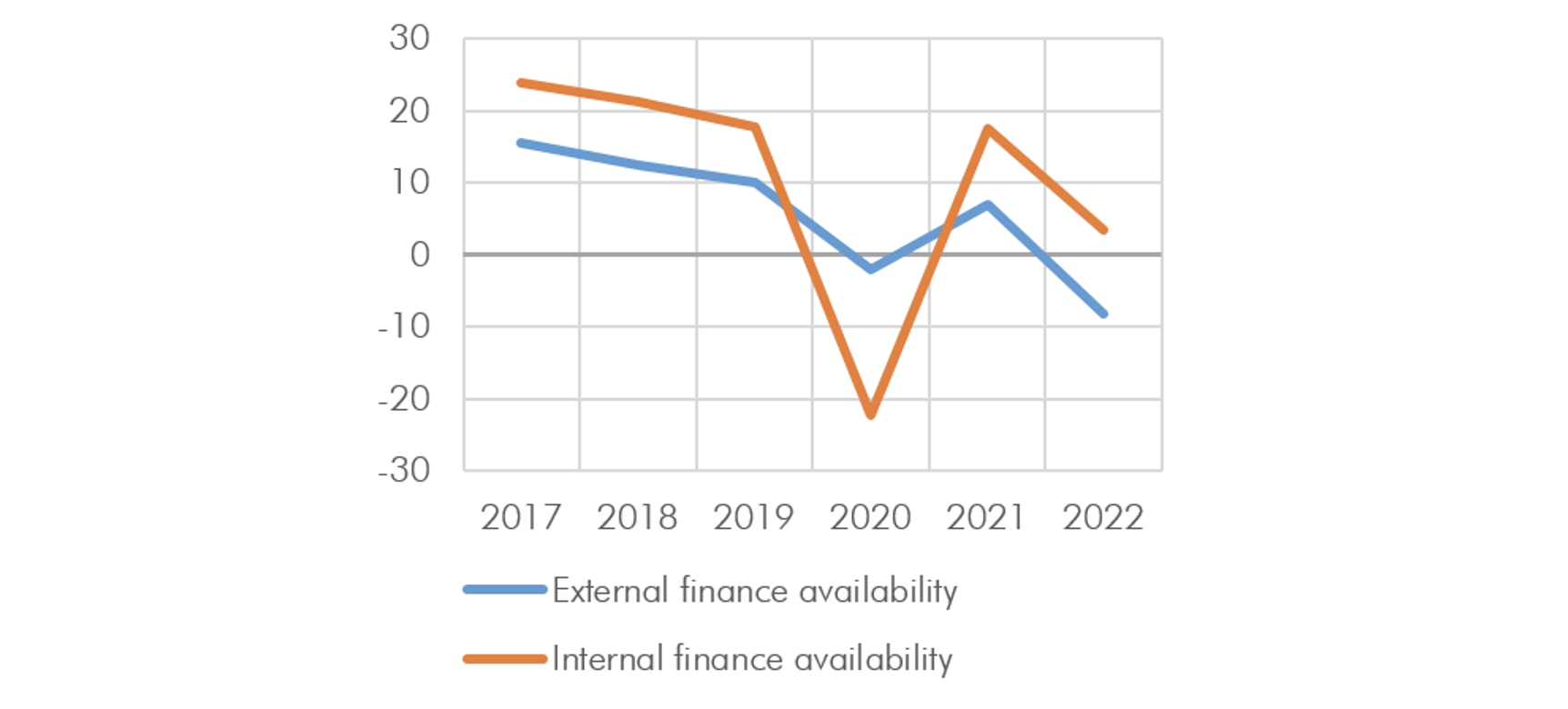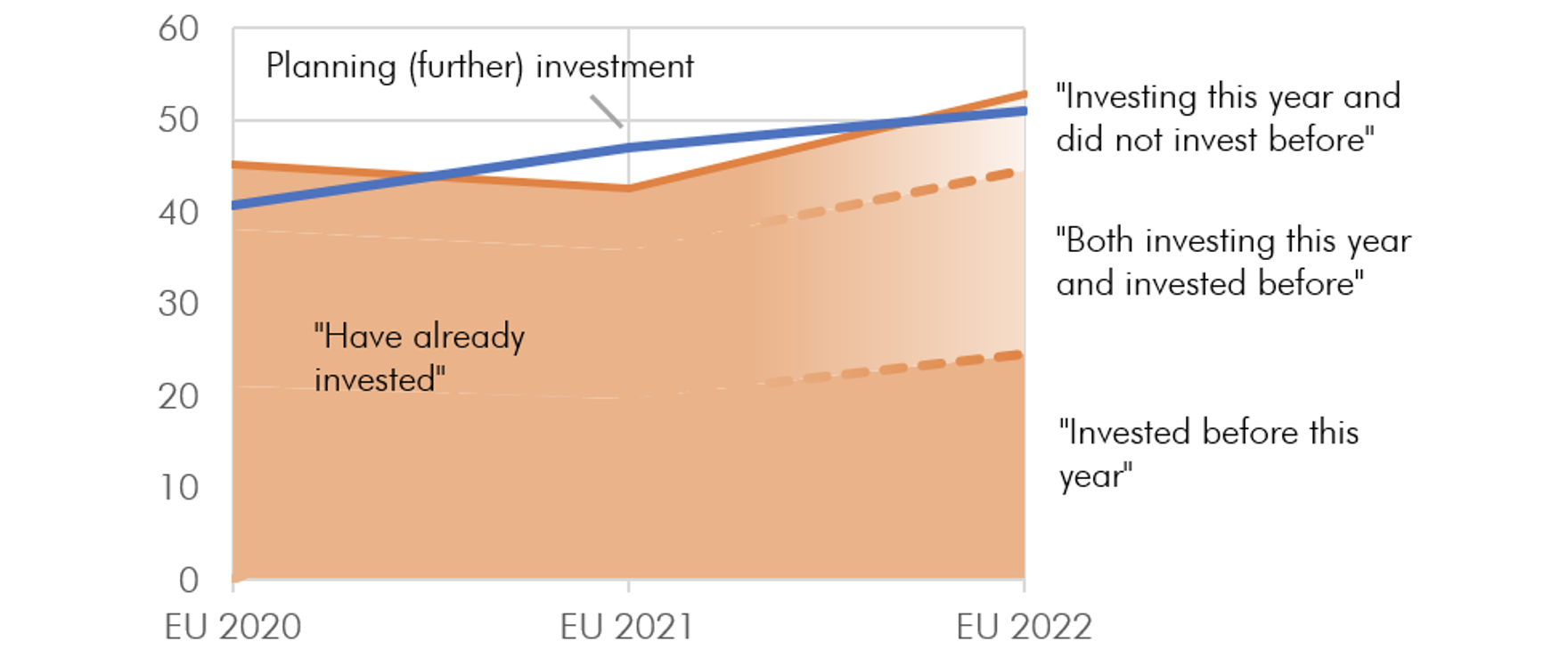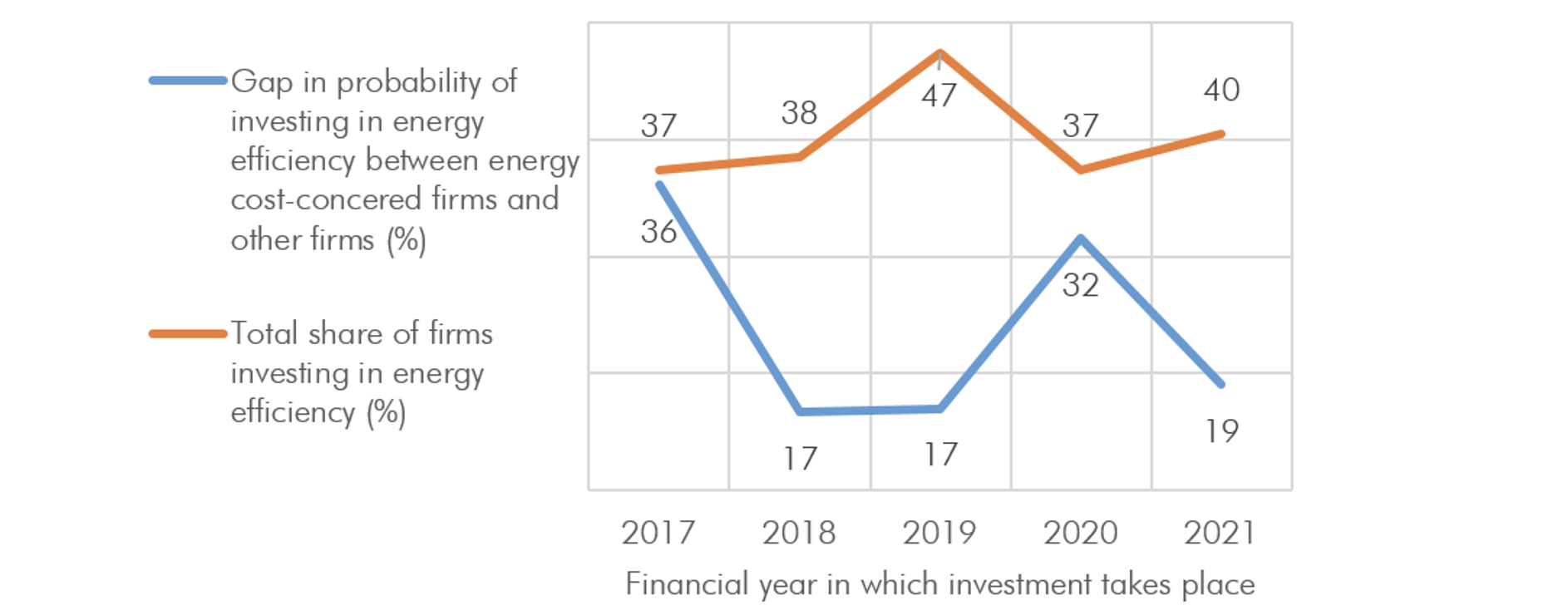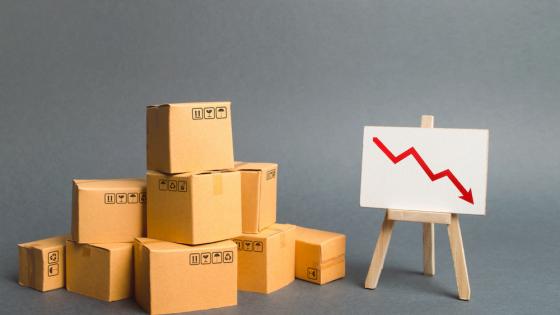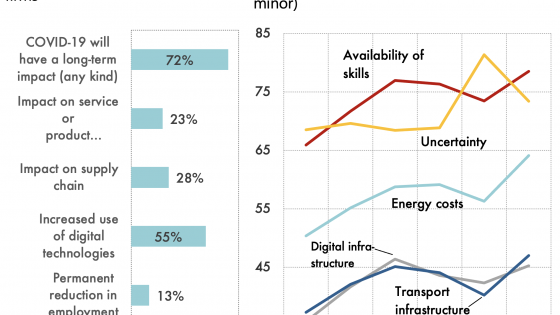Economic crises can be events that trigger structural transformation. Indeed, even in the midst of a crisis, it is natural to speculate on all the lasting changes that that crisis might bring. Sometimes we look for the silver lining. We may also overestimate how radically different the ‘new normal’ may be.
The COVID-19 pandemic was such a case. On the one hand, it was feared that it might have a catastrophic effect on the corporate sector, particularly many small businesses in vulnerable sectors. On the other, it seemed to herald a shift towards digitalisation and new ways of working (Eberly et al. 2021, Dingel and Neimann 2020).
Now, just as recovery from the pandemic seemed assured, the world economy has been hit by a conjunction of new shocks: an energy price and supply shock linked to the Russian invasion of Ukraine; and a dramatic reversal of the ultra-low inflation and interest rate environment of the last decade. In Europe, reinforcing energy security is the immediate priority. As set out in the European Commission’s REPowerEU plan (European Commission 2022), this will increasingly mean an already overdue acceleration of investments in renewable energy sources, other energy infrastructure and energy efficiency measures. It is hoped that the dramatic rise in energy costs will have a silver lining in helping to spur that green investment and innovation (Stern and Valero 2021).
The latest release of the European Investment Bank Investment Survey (EIBIS) helps to shed some light on the impact of the pandemic, how the current shocks have already been felt by firms in Europe, and how firms may react going forward (EIB 2022). EIBIS samples 12,000 firms across the EU annually, with a smaller representative sample of firms in the US used to provide a comparator.
The EU corporate sector recovered better than expected from COVID-19
As firms begin to tackle the fallout of the invasion of Ukraine and the rise in inflation, EIBIS at least gives some reassurance about the state of the EU corporate sector in the wake of the pandemic. When interviewed this summer, 84% of firms already expected their sales in 2022 to be back at least to pre-pandemic levels. Only 16% of firms told us that they still don’t expect to get back to where they were in 2019. Of the 51% of firms that were hit badly enough to experience a year-on-year drop in sales, three quarters expect to get back at least to where they were before the pandemic.
Of course, some firms have suffered lasting damage. But of the 13% of firms that were both badly hit by the pandemic and still not expecting to recover sales this year, less than one-third were not back to profitability – that is less than 4% of all firms in the EU (Figure 1).
Figure 1 Impact of COVID-19 on firms’ sales and expected recovery by the end of 2022 (EU, share of firms)
However, massive new shocks are testing corporate resilience…
The strong recovery in the corporate sector is fortunate, particularly given the scale of the new shocks that were already apparent earlier this year. In mid-2022, firms already foresaw a sharply deteriorating general economic and political climate, with prospects in their own sector also worsening. At the same time, the number of firms that see energy costs as an obstacle to investment going forward rose dramatically, to 82%, with an extraordinary 59% describing these costs as a “major obstacle”. Meanwhile, uncertainty and difficulties in finding skilled staff remain among the top barriers to investment named by firms (Figure 2).
Figure 2 Factors perceived as a long-term obstacle to investment (% of EU firms)
Financing conditions for the corporate sector were also already tightening. This has been driven both by both monetary policy and by increased risk aversion, with risk spreads widening. EIBIS reveals an uptick in the number of finance-constrained firms in the EU, despite the fact that this is a variable that tends to lag capital market conditions. Across the EU, the share of finance-constrained firms rose above 6% for the first time in a number of years. There is also a high degree of variability across the EU, with this indicator ready above 15% in certain countries of central and Eastern Europe.
In line with tightening conditions at the macro level, firms expected the availability of external finance to get worse in the short term. Their expectations are now more pessimistic than in 2020 when the rapid policy response did a huge amount to assuage fears (Figure 3).
Figure 3 Firms expecting improvement in financing conditions minus those expecting worsening (EU, percentage points)
…while structural transformation needs remain significant
The new shocks from energy costs and financial tightening, coming on top of the trade disruptions in the wake of the pandemic, clearly pose downside risks for corporate investment going forward. This would be less of a concern if investment by the EU corporate sector did not already look weak by some measures.
One indication of this is gross fixed capital formation minus investment in housing; a broad measure overwhelmingly made up of productive investment by corporations. After the Global Crisis, Europe started lagging some 2% of GDP behind the US on this indicator (OECD, National accounts statistics). By 2019, this gap had been slowly brought down to around 1%, but the pandemic seems to have hit productive investment in Europe harder than in the US, opening the gap back up to 1.4% in 2021.
EIBIS data, meanwhile, show a growing innovation gap with the US. Nineteen percentage points fewer firms in the EU report that they invest in some kind of innovation. This is a sudden widening of what appears to be a structural gap, and that is driven by lower investment in the adoption of new technologies and practices (Figure 4).
Figure 4 Share of firms investing in innovation (%)
By contrast, the answer is more positive when we look at the use of new digital technologies. 69% of EU firms now say they have adopted at least one kind of advanced digital technology, and the gap with respect to the US figure (71%) is no longer statistically significant. But firms in the US have nonetheless shown a greater ability to use digital technologies to respond to the conditions created by the pandemic. In the EU, we see that it is mostly firms that already use quite advanced digital technologies that have been able to respond through digital technology adoption and that are continuing to do so.
European firms have been making steading progress on climate-related investment
More than half of EU firms now say that they have invested in some way to tackle greenhouse gas emissions. 28% did so in the last year alone, and 8% invested for the first time. 51% plan to carry out such investment in the next three years. Overall, climate investment appeared to stall slightly during the pandemic but picked up the pace again during the last year.
Figure 5 Share of EU firms investing to tackle climate change (%)
Adaptation to climate change is also rising on the agenda of European firms. 57% of them already perceive the effects of climate change – such as extreme weather events - on their business. 17% report a major impact from such extremes. One-third of European firms, moreover, have already taken action to adapt themselves to the risks they perceive. Unsurprisingly, firms that say they have directly experienced impacts from climate change are much more likely to take action.
Will higher energy costs lead to more investment in energy efficiency?
Higher energy prices clearly increase incentives for firms to invest in energy efficiency. Given the need to reduce Europe’s dependence on imports from Russia and on fossil fuels in general, it is natural to hope that this effect is significant. The latest round of EIBIS cannot be used to predict exactly how firms will react, but it can give us some indications based on how firms have reacted to changing energy cost concerns in recent years and their responses this summer.
According to our data, firms that see energy costs as a major obstacle were at least 17% more likely to conduct investment in energy efficiency in recent years than those that do not see so. And the number rose to more than 30% in some years, such as in 2020. Now that many more firms see energy costs as an obstacle, we should expect investment in energy efficiency to increase (Figure 6).
Figure 6 Energy efficiency investment and the gap in the probability of investing, conditional on firms seeing energy costs as a major obstacle
However, the magnitude of this effect on the overall rate of investment in energy efficiency should not be overestimated and should not become a cause for complacency. More firms now see energy costs as a problem, but many of those firms were already investing in energy efficiency before (42% over the past year). This means that the overall increase in firms investing, on the basis of past trends, may be relatively modest.
At the same time, we have seen that investment in energy efficiency is also sensitive to wider economic and financial conditions. A higher share of firms invested in energy efficiency in 2019, for example, and again in 2021, while fewer invested in 2020, during the height of the pandemic (Figure 6). This variation was driven largely by firms that did not see energy costs as a major constraint and were presumably more likely to postpone such investments when conditions were more difficult. Uncertainty and financial constraints are important factors that may counteract the effect of higher energy costs.
Promoting green corporate investment
The current tightening of financial conditions is a particular source of concern in the context of the green transition. When compared to fossil fuel-based technologies, green investments such as solar panels or energy efficiency improvements tend to involve high capital costs balanced by very low running or maintenance costs over time. This means their economic attractiveness vis-à-vis older brown technologies is very dependent on the cost of capital. As financial conditions tighten, there is a risk that long-term green investments may be the first that companies drop. This means that there is a strong rationale for the provision of direct support to firms – both financial and technical – for energy efficiency and other green investments.
Building a more efficient and reliable EU energy market will be very important to mitigate the effects of uncertainty on green investment. Instead of price volatility and continuous uncertainty about policy interventions, firms would benefit from a coordinated, collaborative European approach that gives them confidence about the energy market conditions they will face, not only in the coming months but also in the coming years. We should be wary of expensive energy price subsidies that go too far and remove incentives for green investment. But likewise, there is nothing to be gained by volatility and price spikes that place a huge short-term burden on households and businesses. There is a need to tackle the uncertainty that surrounds green investment while maintaining sufficient incentives for action.
References
Eberly, J C, J Haskel and P Mizen (2021), “'Potential Capital’, Working from Home, and Economic Resilience”, NBER Working Paper 29431 and VoxEU.org, January 2022.
EIB – European Investment Bank (2022), “European Union Overview EIB Investment Survey”.
European Commission (2022), “Communication from the Commission to the European Parliament, the European Council, the Council, the European Economic and Social Committee and the Committee of the Regions: REPowerEU Plan”, COM(2022) 230 final.
Dingel, J and B Neiman (2020), "How many jobs can be done at home?", VoxEU.org, 7 April.
Stern, N and A Valero (2021), “Innovation, growth and the transition to net-zero emissions”, Research Policy 50(9): 104293.




